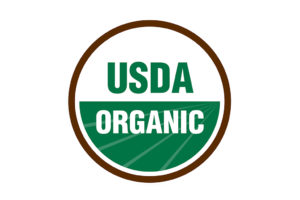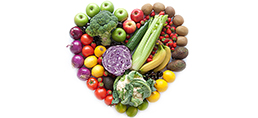
As if you needed any more evidence of the organic food industry’s growing popularity with consumers, the U.S. Department of Agriculture has given us fresh data attesting to the appeal of pesticide-free foods.
The agency recently released a report that shows a 13 percent increase in the number of U.S. certified organic farms and businesses, continuing a trend of double-digit growth and a steady increase since 2002. There are now nearly 25,000 certified organic operations in the U.S. and more than 37,000 worldwide.
Clearly, organic is winning over the masses. But what exactly is this label, really?
Let’s look again to the USDA for elaboration: Organic plant foods are produced without using most conventional pesticides and without using fertilizers made from synthetic ingredients or sewage sludge, bioengineering or ionizing radiation.
Organic meat, poultry, eggs and dairy products come from animals that have not received growth hormones or antibiotics. These farms are inspected by a government-approved certifier to guarantee these standards are being met. There are also USDA standards for organic handling and processing.
The Academy of Nutrition and Dietetics provides concise guidelines for the three levels of organic food claims:
- 100% organic: Products are completely organic or made only of organic ingredients, qualifying them for the USDA organic seal.
- Organic: At least 95 percent of the product’s ingredients are organic, making the product eligible for this claim and the USDA Organic seal.
- Made with organic ingredients: At least 70 percent of the ingredients for these products are certified as organic. The USDA organic seal cannot be used, but the product can bear the message, “Made with organic ingredients.”
It’s not difficult to see the differences between organic farming and inorganic farming—it’s basically the use of natural, clean ingredients versus the use of man-made herbicides, insecticides and hormones.
An official seal
Want to use the official “USDA Organic” seal? Make sure you know your product.
According to the USDA, people who sell or label a product as organic—when they know that it does not meet the USDA’s standards for organics—could be fined up to $11,000 for each violation.
The Environmental Working Group, a nonprofit, nonpartisan organization that champions human health and the environment, has established a handy guide for buying organic products at the grocery store.
They divvy the selection into two groups: the Dirty Dozen and the Clean 15.
If you’re going to buy organic products, you should first aim to buy items on the Dirty Dozen list, because those typically have more pesticides on them when they’re non-organic. That is, if you bought non-organic versions of the items on the Dirty Dozen list, you would run a greater risk of pesticide exposure and contamination in your diet. (The Environmental Working Group establishes the contamination rankings for fruits and vegetables by various testing methods that detect pesticide levels.)
The Dirty Dozen: apples, celery, strawberries, peaches, spinach, imported nectarines, imported grapes, sweet bell peppers, potatoes, blueberries, lettuce and kale/collard greens.
The items that are lowest in pesticides are called the Clean 15: onions, corn, pineapples, avocado, asparagus, sweet peas, sweet potatoes, mangoes, eggplant, cantaloupe (domestic), kiwi, cabbage, watermelon, grapefruit and mushrooms.
Perhaps most importantly, you should consider buying your fruits and vegetables locally.
According to the Oncology Nutrition Dietetics Practice Group, local foods tend to be higher in nutrients because they’re picked fresh and sold soon after picking. In addition, local foods are often cheaper than grocery store items—and this includes conventional and organic.
Localharvest.org is a great resource for finding local foods.
 /a>
/a>
 /a>
/a>
 /a>
/a>